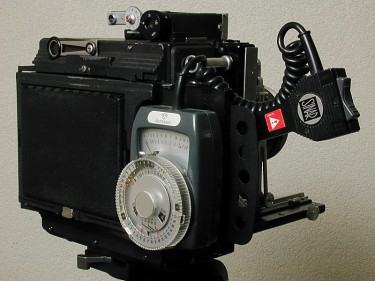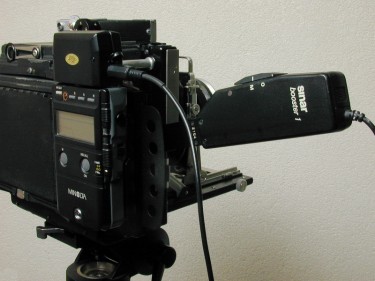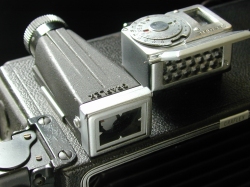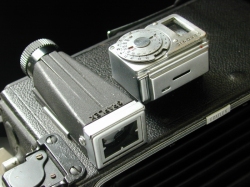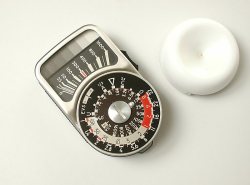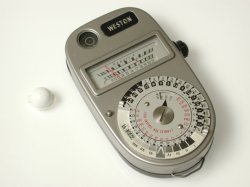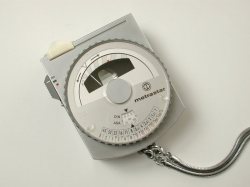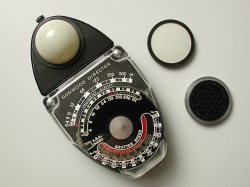 |

 Condition - Unexposed
|
Sunning the Aero contributed by Georges Laloire Like everyone who is interested and intrigued by the Aero-Ektar, I have read that exposing to ultra-violet rays of the sun could reduce or remove the brownish stain of the rear element. Myth or truth ?, I wanted to find out....
I took a glass jar, folded a foil of cooking aluminium and placed it
inside, filled the jar with water, dropped the degreased rear group in it
with the browned glass facing up and let the sun do the healing. Exposing to the Sun lasted from noon to six pm, and was repeated several times giving the element a total of about 36 hours of UV bathing.
Here are the results. One can see there is a difference between the three
pictures.
I also tried to show the effect of the browned glass on a picture. I simply
took two defocused images of the same flat board in my kitchen, with and
without the browned lens in front of the lens of the digital camera. Both
pictures were taken in succession, so the light can be considered
as constant. I repeated this after exposing the element by UV rays.
The difference is less spectacular here but noticeable (on the original digital files). Looking forward to your results or comments eventually. Mail me through the user site...
Comments JohnD ::
As far I can see, the difference is very clear and the experiment well done! |









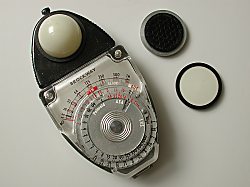 Brockway
BrockwayBrockway also USA made, a direct descendant of the Norwood Director. For complete listing and history see: www.johndesq.com/director |
| Formulae |
|---|
| Test bench |
| Exposure Metering |
| Meter Calibration |
| Asking a Photograph |
| Misc Polaroid holders |
| Interested? Want to join? - Send your commitment and experience.. Use our TalkBack button! |
 |
Have an Aero yourself, want to mount it? Need a Lensboard? Use the TalkBack button! |







